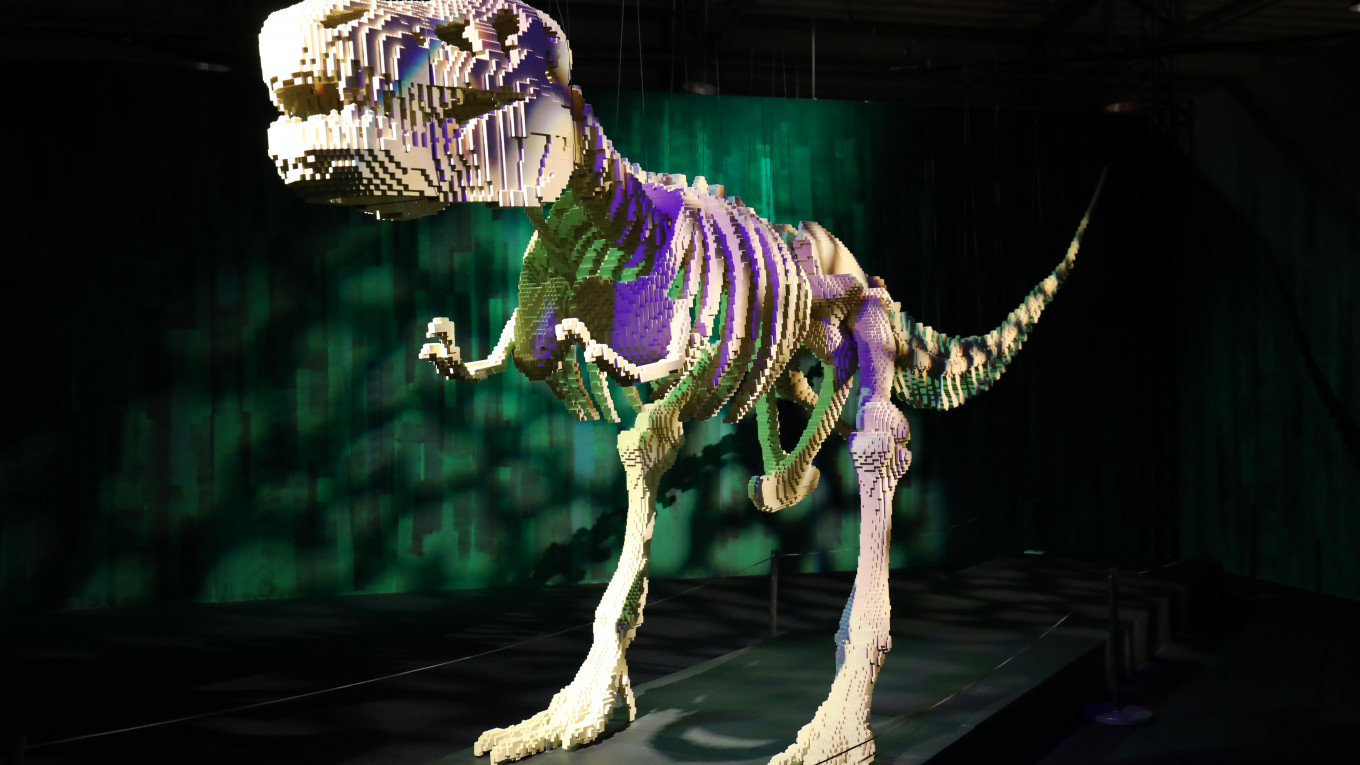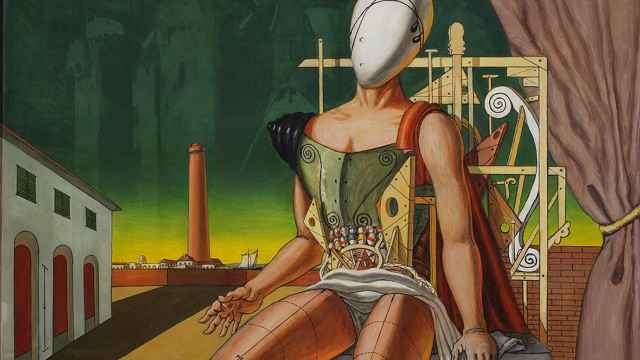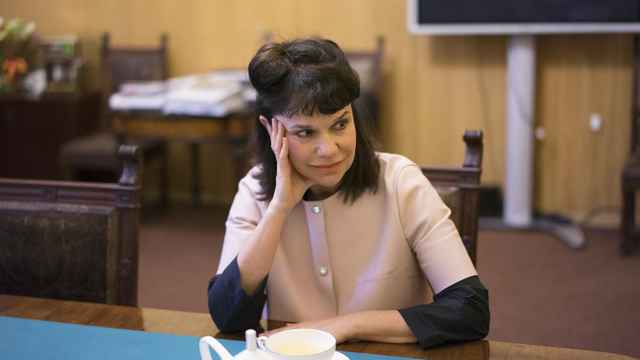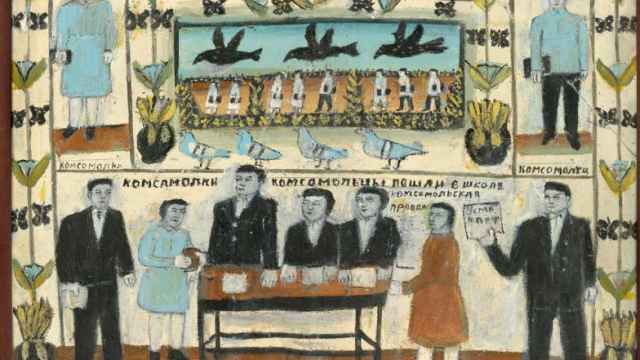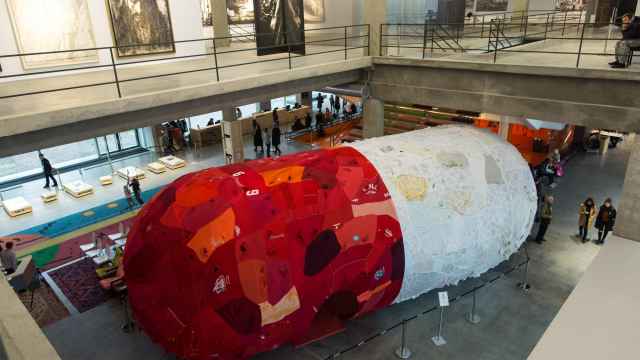Made from 80,020 individual Lego bricks, artist Nathan Sawaya’s six-meter long replica of a Tyrannosaurus Rex is anything but child’s play. The sculpture, currently on display at Moscow’s ExpoCenter, took three months to complete and required an in-depth study of dinosaur anatomy, not to mention some complex engineering.
“Each sculpture has its own obstacles and challenges,” says Sawaya, who is based in New York City. “For example, creating a human form out of rectangular bricks requires special attention to detail to get the curves of the human body formed from thousands of little corners.”
Sawaya’s Lego creations have toured London, New York and Paris as part of the hugely popular exhibition “The Art of the Brick.” Organizers expect the Moscow show to attract 200,000 visitors over a two-month run.
Russian Lego enthusiasts can enjoy an array of Sawaya’s most iconic works, including “Yellow,” a sculpture of a man with hundreds of lego bricks pouring from his chest. Despite the numerous “don’t touch” signs dotted around the hall, temptation proves too much for some of the exhibition’s younger visitors, who poke their hands inside “Yellow”’s chest cavity in search of a stray brick. Fortunately, Sawaya’s works are sturdier than the average Lego construction.
“When I am building, I glue as I go,” says Sawaya. “That means each brick is glued into place, and if I make a mistake, I use a hammer and chisel to separate the bricks. It can be a slow process.”
Sawaya creates his artwork in his Los Angeles studio, where he stores over six million bricks sorted into different shapes and colors. Most of his sculptures have been transported whole to Moscow, although the dinosaur was so big it had to be broken down into smaller pieces and reconstructed on site. His inspiration comes from all sorts of places, but mainly from travel. For the Moscow exhibition he created a life-size ballerina wearing a rainbow-colored tutu, a nod to the country’s great tradition of classical dance.
“I carry a sketchpad with me when I’m traveling so I can jot down ideas as they come to me. Once I have a solid idea, I envision the final piece before I put down the first brick,” he says.
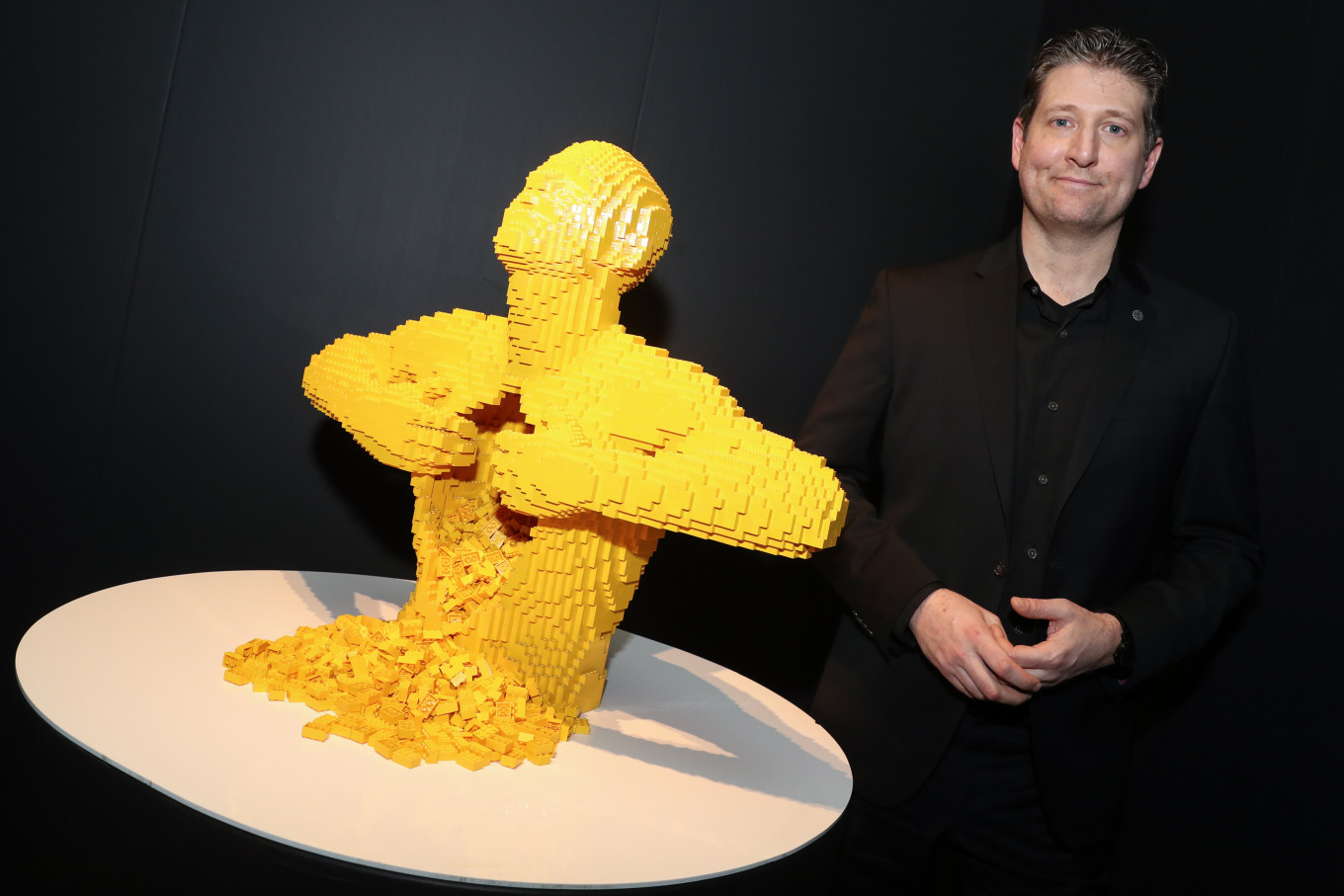
It’s no mystery why Sawaya’s work has such a universal appeal. Lego was voted “Toy of the Century” by Fortune Magazine and last year alone the brand sold 75 billion pieces worldwide. Given that Lego has been produced since 1958, there is now enough in existence for everyone in the world to own at least 75 bricks. The brand opened its first store in Russia in 1995 and in-country sales have improved year on year ever since.
At the end of the exhibition visitors are encouraged to tackle several large basins of Lego and get working on their own creations. There are twice as many adults jostling elbow-to-elbow as children.
Pasha, aged eight, has come to the exhibition with his mum and younger brother. “I like playing with Lego because you can build from a set or you can make up your own,” he told The Moscow Times.
One of the most playful series in “The Art of the Brick” pays homage to iconic artworks, including Leonardo da Vinci’s “Mona Lisa,” Michelangelo’s “David” and even a Lego brick rendering of Edvard Munch’s “The Scream.” Sawaya says that mastering techniques from impressionism to classical sculpture in brick form allows them to be more “relatable” to audiences, even people who wouldn’t usually set foot inside an art gallery.
“People can connect with the artwork on a different level because of their familiarity with the toy,” he says.
Sawaya hasn’t always been an artist. After graduating college he pursued a successful career as a corporate lawyer and Lego was initially just a therapeutic way of dealing with the stress and long hours of his day job. When people began commissioning pieces from him he took a leap of faith, quit his job and began building full time.
“In the end, it was not that difficult of a choice,” he says. “Now I can look back and acknowledge that the worst day as an artist is still better than the best day as a lawyer.”
A Message from The Moscow Times:
Dear readers,
We are facing unprecedented challenges. Russia's Prosecutor General's Office has designated The Moscow Times as an "undesirable" organization, criminalizing our work and putting our staff at risk of prosecution. This follows our earlier unjust labeling as a "foreign agent."
These actions are direct attempts to silence independent journalism in Russia. The authorities claim our work "discredits the decisions of the Russian leadership." We see things differently: we strive to provide accurate, unbiased reporting on Russia.
We, the journalists of The Moscow Times, refuse to be silenced. But to continue our work, we need your help.
Your support, no matter how small, makes a world of difference. If you can, please support us monthly starting from just $2. It's quick to set up, and every contribution makes a significant impact.
By supporting The Moscow Times, you're defending open, independent journalism in the face of repression. Thank you for standing with us.
Remind me later.


